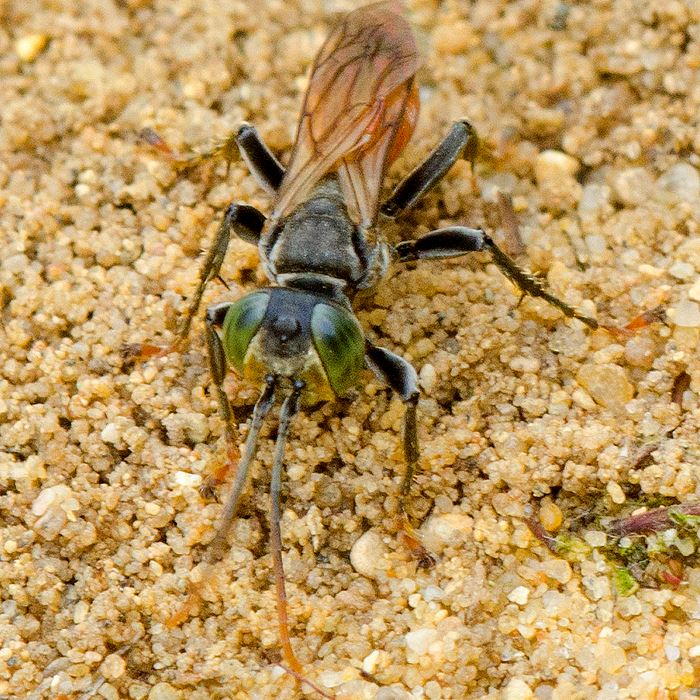The Sting of Success

By Karen Menard
Immobilized by paralysis, a grasshopper lays in the heat of the summer sun waiting to experience the fate of a dark, underground tomb. The frozen carcass is quickly dragged away by its much smaller perpetrator, the rare antenna-waving wasp (Tachysphex pechumani).
Considered an inland dune specialist and an excellent indicator of ancestral oak savanna, this wasp may still be found today successfully carrying on its lifecycle in a few sites at Oak Openings Preserve Metropark. The Oak Openings Region is just one of a handful of places in the U.S. and Canada where this insect can still be found.
There are specific habitat requirements to further the species’ biological success, thereby ensuring new wasps each season: Well-maintained grasslands and dune openings with the appropriate species of Melanoplus sp. grasshoppers present, charcoal residue from prescribed fires, appropriate soil temperature, and the right amount of sand compaction are crucial.
Metroparks routinely works to facilitate prescribed burns and the removal of woody and invasive species throughout this insect’s key habitats for the benefit of a wide range of plant and animal species.
The specific types of grasshoppers that inhabit these special sites become a type of prey for the wasps and will have their destiny sealed if caught. The dire sting only paralyzes the grasshopper, allowing the wasp to overcome it and drag it into its underground lair that was created by excavating sand with its legs and body. The wasp then places an egg strategically on the live grasshopper, which will sustain the hungry wasp larva as it grows.
This dramatic process hinges on many factors and involves some brazen antics by a small, antenna-waving beast that only lives for about two weeks. As small and unknown as this species is, its continued conservation as an important component of Oak Openings biodiversity is vital.
While these wasp works hard to ensure the success of their future generations, Metroparks will too.
Did You Know?
Seasonal monitoring of rare animals like the antenna-waving wasp is an important component in the continued conservation of species.
--
Photo by Art Weber
Video by John Cira
Video: Numerical data and habitat surveys are essential. Natural resource research and monitoring interns Rami Mohamed and John Cira recently observed four adults at Oak Openings Preserve